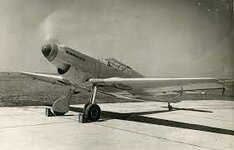Shortround6
Major General
Uh, you do know the history of the 109 don't you ?Drop tanks shouldn't be necessary for anything but extreme long range work, and should not be necessary for short flights from the French coast to Britain and back.
To that point, the Germans are better off designing a single engine, single seat fighter with sufficient internal fuel. The P-51B carried 696 L (184 US Gallons) of internal fuel. The Bf 109E carried only 333 L (88 US Gallons) internally for a paltry cruise range of 700 km (435 miles). Considering the Nazi plan was always to fight across the vast spaces of the Russian steppe why did they make their primary fighter so short legged as to be unable to conduct simple internal flights from, for example the primary Bf 109 factory in Augsburg to Königsberg on the Polish border?
The Bf 109E and P-51B had similar engine power and performance. The Bf 109 should have been made with twice its internal fuel plus provisions for drop tanks, allowing the fighter to escort and fight over Moscow, let along Coventry.

First flight 28 May 1935 with a RR Kestrel engine and a fixed pitch two blade propeller.
Fuel was 235 or 270 liters.
Explains a lot about later models. Not so much about Luftwaffe thinking.
